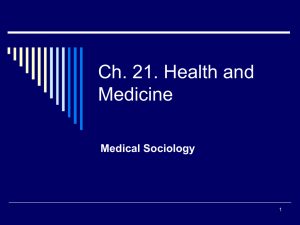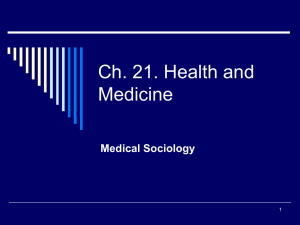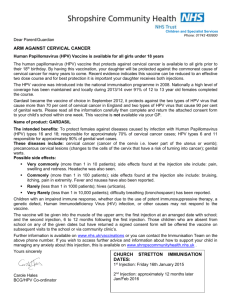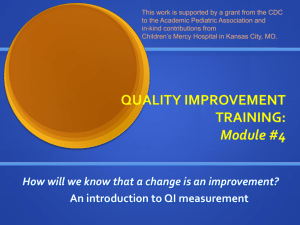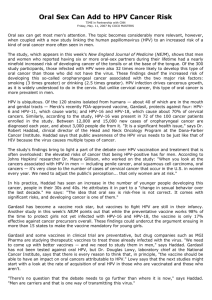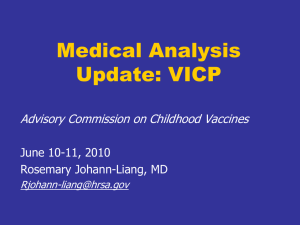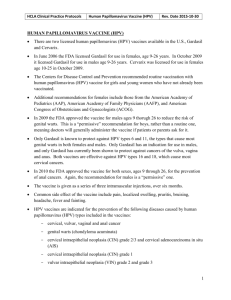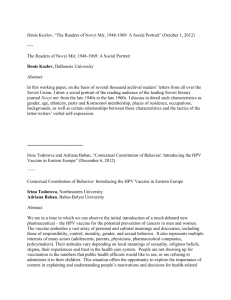Prophylactic quadrivalent human papillomavirus (types 6, 11, 16
advertisement
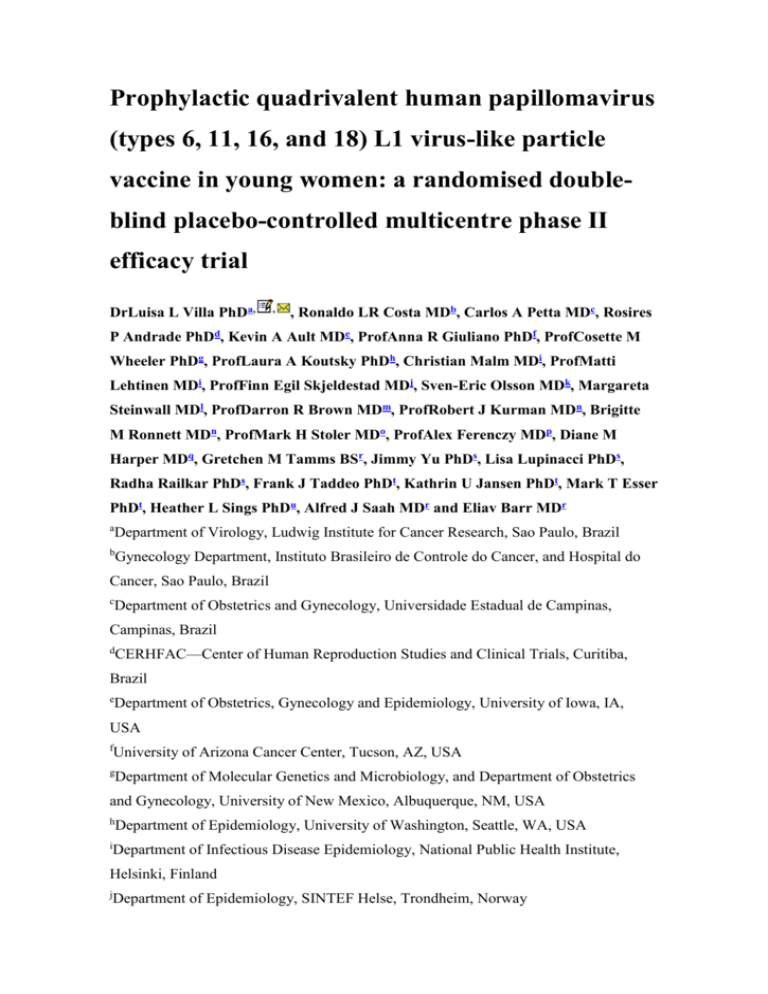
Prophylactic quadrivalent human papillomavirus (types 6, 11, 16, and 18) L1 virus-like particle vaccine in young women: a randomised doubleblind placebo-controlled multicentre phase II efficacy trial DrLuisa L Villa PhDa, , , Ronaldo LR Costa MDb, Carlos A Petta MDc, Rosires P Andrade PhDd, Kevin A Ault MDe, ProfAnna R Giuliano PhDf, ProfCosette M Wheeler PhDg, ProfLaura A Koutsky PhDh, Christian Malm MDi, ProfMatti Lehtinen MDi, ProfFinn Egil Skjeldestad MDj, Sven-Eric Olsson MDk, Margareta Steinwall MDl, ProfDarron R Brown MDm, ProfRobert J Kurman MDn, Brigitte M Ronnett MDn, ProfMark H Stoler MDo, ProfAlex Ferenczy MDp, Diane M Harper MDq, Gretchen M Tamms BSr, Jimmy Yu PhDs, Lisa Lupinacci PhDs, Radha Railkar PhDs, Frank J Taddeo PhDt, Kathrin U Jansen PhDt, Mark T Esser PhDt, Heather L Sings PhDu, Alfred J Saah MDr and Eliav Barr MDr a Department of Virology, Ludwig Institute for Cancer Research, Sao Paulo, Brazil b Gynecology Department, Instituto Brasileiro de Controle do Cancer, and Hospital do Cancer, Sao Paulo, Brazil c Department of Obstetrics and Gynecology, Universidade Estadual de Campinas, Campinas, Brazil d CERHFAC—Center of Human Reproduction Studies and Clinical Trials, Curitiba, Brazil e Department of Obstetrics, Gynecology and Epidemiology, University of Iowa, IA, USA f University of Arizona Cancer Center, Tucson, AZ, USA g Department of Molecular Genetics and Microbiology, and Department of Obstetrics and Gynecology, University of New Mexico, Albuquerque, NM, USA h i Department of Epidemiology, University of Washington, Seattle, WA, USA Department of Infectious Disease Epidemiology, National Public Health Institute, Helsinki, Finland j Department of Epidemiology, SINTEF Helse, Trondheim, Norway k Karolinska Institute at Danderyd Hospital, Stockholm, Sweden l University Hospital, Lund, Sweden m Department of Medicine, Indiana University School of Medicine, Indianapolis, IN, USA n Department of Pathology, Johns Hopkins University School of Medicine, Baltimore, MD, USA o Department of Pathology, University of Virginia School of Medicine, Charlottesville, VA, USA p Department of Pathology, SMBD Jewish General Hospital and McGill University, Montreal, PQ, Canada q Department of Obstetrics and Gynecology and Community and Family Medicine, Dartmouth Medical School, Hanover, NH, USA r Department of Biologics Clinical Research, Merck Research Laboratories, West Point, PA, USA s Department of Biostatistics, Merck Research Laboratories, West Point, PA, USA t Department of Vaccine and Biologics Research, Merck Research Laboratories, West Point, PA, USA u Department of Medical Communications, Merck Research Laboratories, West Point, PA, USA Available online 8 April 2005. Refers to: The end for genital human papillomavirus infections? The Lancet Oncology, Volume 6, Issue 5, May 2005, Pages 256-257 Margaret Stanley Abstract | Full Text + Links | PDF (58 K) The end for genital human papillomavirus infections? The Lancet Oncology, Volume 6, Issue 5, May 2005, Pages 256-257 Referred to by: Margaret Stanley Abstract | Full Text + Links | PDF (58 K) Summary Background A randomised double-blind placebo-controlled phase II study was done to assess the efficacy of a prophylactic quadrivalent vaccine targeting the human papillomavirus (HPV) types associated with 70% of cervical cancers (types 16 and 18) and with 90% of genital warts (types 6 and 11). Methods 277 young women (mean age 20·2 years [SD 1·7]) were randomly assigned to quadrivalent HPV (20 μg type 6, 40 μg type 11, 40 μg type 16, and 20 μg type 18) L1 virus-like-particle (VLP) vaccine and 275 (mean age 20·0 years [1·7]) to one of two placebo preparations at day 1, month 2, and month 6. For 36 months, participants underwent regular gynaecological examinations, cervicovaginal sampling for HPV DNA, testing for serum antibodies to HPV, and Pap testing. The primary endpoint was the combined incidence of infection with HPV 6, 11, 16, or 18, or cervical or external genital disease (ie, persistent HPV infection, HPV detection at the last recorded visit, cervical intraepithelial neoplasia, cervical cancer, or external genital lesions caused by the HPV types in the vaccine). Main analyses were done per protocol. Findings Combined incidence of persistent infection or disease with HPV 6, 11, 16, or 18 fell by 90% (95% CI 71–97, p<0·0001) in those assigned vaccine compared with those assigned placebo. Interpretation A vaccine targeting HPV types 6, 11, 16, 18 could substantially reduce the acquisition of infection and clinical disease caused by common HPV types. Published online April 7, 2005 DOI 10.1016/S1470-2045(05)70101-7 Correspondence to: Dr Luisa L Villa, Ludwig Institute for Cancer Research, R Prof Antonio Prudente 109, 4th floor, 01509-010 Sao Paulo, SP, Brazil Volume 6, Issue 5, May 2005, Pages 271-278

